Text
Common Eye Infections and Their Symptoms
An eye infection can mean many different things. An infection in your eye can show up in many ways. A lot depends on which part of your eye has the problem. For instance, the symptoms can come up in our eyelid, cornea, or conjunctiva.

People often catch an eye infection which might require an eye drop or a minor medicine to cure it. The common symptoms of a common eye infection include:
· Pain
· Discomfort
· Itchy eyes
· Burning sensation in the eyes
· Light sensitivity
· Eyes won't stop tearing up
· Irritation in your eyes
· Swollen or red or purple eyelids
· Crusty lashes and lids, especially in the morning
If one is suffering from the above-mentioned symptoms, one should go see a doctor before it gets worse.
There are various eye symptoms that one should never ignore. These could be fatal for the person suffering from it. It might lead to permanent loss of eyesight if it is not checked and corrected.
1. Floaters - Floaters are little squiggles that suddenly appear in the vision. While the occasional floater is normal, one should contact a doctor if there is an increase in floaters. One should also contact their doctor if there is a sudden experience of floaters along with flashes of light. This could be a sign of a retinal tear, which could result in retinal detachment.
2. Eye pain - It is a matter of concern when someone experiences sudden, unexplained eye pain. This sudden eye pain can be a sign of undiagnosed glaucoma or inflammation in the eyes. It is very important that one go see a doctor.
3. Blurry vision - Patients sometimes start to notice that their vision does not seem to be as good as it used to be. If one starts to notice that their vision is getting blurry or hazy, one should schedule an appointment with their eye doctor as soon as possible as this could be a sign of cataracts.
4. Redness - Having red-eye can sometimes be harmless. It could be the result of an allergy or just rubbing the eyes very hard or staying up late. However, if you wear contacts regularly and your eyes suddenly become red, watery, and painful, contact the doctor immediately as this could be the sign of a serious eye infection.
5. Double vision - Double vision is a serious problem that should never be ignored. If the double vision is limited to just one eye, this could indicate a corneal problem. But if the problem persists in both the eyes, this could be a sign of a neurological problem. If the double vision is accompanied by slurred speech or pain, one must then go to an emergency room immediately.
Often these symptoms, if not treated early, can take a worse turn which can even lead to eye cancer. People with eye cancer may experience the following symptoms. Sometimes people with eye cancer do not show any of these symptoms, or sometimes these symptoms may be caused by a medical condition that is not cancer.
· Having trouble seeing
· Losing part of the field of vision
· Seeing flashes of light
· Seeing spots, or floating objects
· Having dark spots on the iris
· Conjunctivitis
Children often suffer from a very common eye infection called conjunctivitis. It is an inflammation that spreads rapidly. Although it is not very serious, it is necessary to control it and treat it. When one prevents its spread, pinkeye (conjunctivitis) clears up with no long-term problems. However, it is important to call a doctor if a newborn has pinkeye as it could permanently harm their vision.
Some of the symptoms of conjunctivitis, which can be treated by conjunctivitis eye drops, are -
• Redness in the white of the eye or inner eyelid
• Itchy eyes
• More tears than usual
• Blurred vision
• More sensitive to light
Cataract
Cataracts are another eye problem that affects people who are mostly above the age of 40. Some of the signs and symptoms of cataracts include:
• Sensitivity to light
• Clouded and blurred vision
• Seeing "halos" around lights
• Increasing difficulty with vision at night
• Frequent changes in eyeglass or lenses
• Fading or yellowing of colors
Cataracts can cause significant changes in vision. Although it does usually affect older adults, injury, certain medications, and genetic conditions can result in cataracts among the young as well.
These are some of the eye infections that one needs to be aware of to take care of their eyes and keep them healthy. If you or anyone near you show symptoms of eye infections take them to an ophthalmologist near you as soon as possible.
How to choose your Eye Surgeon
Choose the best eye surgeon in Los Angeles, California Dr. Rohit Varma is one of the best Ophthalmologist, Your eyesight is one of the most important senses and you should take extra care of it by protecting your eyes you will be able to live a quality life. Don't ignore your eye health because it will lead to vision loss. Los Angeles, California, United States is known for its hospitality especially services related to the medical. There are many eye hospitals and eye surgeons are in Los Angeles, California, United States but to choose best is a real task After all eye is concerned and you can't neglect this. Choose your ophthalmologist wisely.
Here are a few factors based on which one can choose their ophthalmologists.
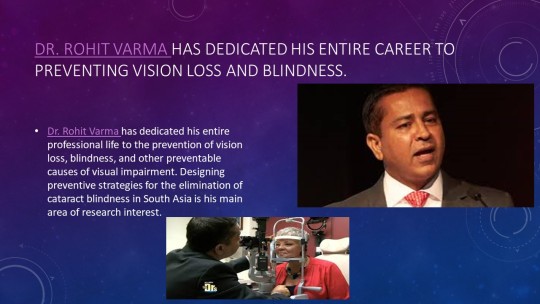
Before going to any Doctor always consult your family, friends. They will give the best suggestions regarding your eye health.
Check with the professional organization-Always consult the professional organization on the primary level.
Choose your optometrist wisely because he will correct your vision and protect you from the vision loss.
If you are suffering from Cataract, Glaucoma or any other eye problem you should consult a skilled doctor who is well experienced and skilled with the latest technology. Always consult a specialist.
Always check the experience of the best Eye Doctors because experienced surgeons will able to handle any case successfully.
Call the optometry department to find out the best eye doctors they have. They always have a list of best authentic surgeons.
An optometrist should be certified through an accredited medical institution and should be currently licensed to practice in your state.
Always consult an eye doctor through recommendation. Since most eye doctors accept a wide range of insurance plans, someone is likely to recommend a few that accept your insurance.
Keep your eye healthy by eating all kinds of vitamin-enriched fruits so that there won't be any need of seeing any eye doctor. Do regular Exercise and yoga-related to eyes.
Consult consumer guide which provides top doctors listing state by state. These lists are the most frequent searched in a survey of doctors.
Ask your health professional such as family doctors etc. They will guide you properly because they are related to that field.
you want to make sure you are picking a doctor who is not only qualified but also related or specialized with the same field.
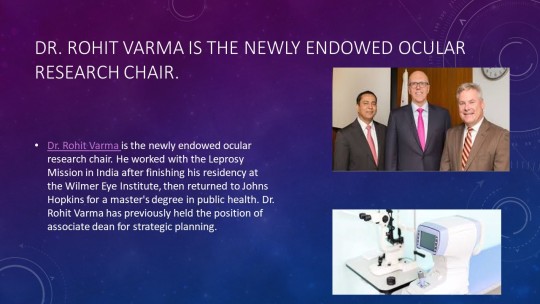
13.After seeing your doctor ask yourself whether you are fully satisfied with the service or not and if not visit again and address all your concerns to the Dr. Rohit Varma.
14. Before visiting research your eye doctor is in which area they are specialized like LASIK, Glaucoma, Cataract, etc. Some doctors are specialized in a few areas. You want to make sure that your doctor should be able to check you thoroughly.
15. Make sure your eye doctor check you thoroughly and at least give you half an hour. Observe your doctor how carefully he is examining you.
16. Follow all the medicine and drops prescribed the Dr. Varma. Don't take the risk with your health.
The eye is the most precious gift that we have got. We got to see the world through it. Don't take a risk with it. Contact Dr. Rohit Varma Now.
0 notes
Text
Dr. Rohit Varma About the Lasik Laser Eye Surgery?

You can get rid of the glass and the contact by undergoing Lasik which will help you out at a low-cost. Getting help from the best ophthalmologist as Dr. Rohit Varma will bring you out from the bothering problem. The surgeon you select should be highly qualified based on the treatment. Lasik laser in Los Angeles, California is one of the frequently performed operations. Before entering into the surgery section you should know something about yourself.
Know completely about yourself:
Know the first thing about why you need to do the surgery. The result you obtain after the treatment will take you with that result in the future also. Many people around the world are wearing glass even after they have done with their eye treatment. This is because their eyes do not support the action of done.
Know about the surgeon before getting committed:
Look for a surgeon who you think is more experienced in their way. Select for a board-certified ophthalmologist. When you select the surgeon, you should not feel hesitated to like too many questions about his/her experience in this field and ask about the rate of complication. Ask the surgeon about will he/she takes care of you even after the treatment is done or will leave you as such from there onwards.

Know your eligibility for the operation:
Doing Lasik eye surgery will not be applicable to everyone. There are some cases who can do eye surgery, people like dry eyes, corneal disease, and some selective eye damage conditions will be handled with Lasik eye surgery. The laser eye surgery in Los Angeles, California will do surgery only if the case is in an extreme range.
Know what will happen during the surgery:
Be sure and get to know about the complete procedure on what will happen during the time of surgery. Ask the surgeon many questions based on the treatment and get cleared of your doubts before you sit for the surgery. Even you are into the treatment you will be awake during the time of surgery so that you can even see what is happening with your eye.
Know about the odds:
When you are out from the lasik laser in Los Angeles, California you will not get tensed in wearing your old glasses like how you were in the past. You can get rid of it but in some cases when the surgery didn't support your eye you will have to wear the spectacles. It will be good advice for you to change the doctor and consult.
Know about the risks:
Lasik surgery is a surgery there is nothing said to be as low risk and high risk. Damages may happen like corneal damage, under correction, inflammation, infection, etc. Sometimes when surgery is done there may have chances of error to occur in 2-3% but in this type of case, the error is said to be as 100%.
Wrapping up:
When you are into the eye surgery select the best ophthalmologist who you think will be good for your surgery. With the help of this article, you can find the best one and have a healthy eye without wearing glasses.
The Dr. Rohit Varma is associated with USC Vision United States, he is the leading specialist for Lasik laser surgery in Los Angeles, California, Beyond SMILE, Beyond LASIK. He has written many articles and blogs for lasik laser, lasik surgery, contoura vision lasik surgery, smile laser eye surgery, laser eyes operation and more related services. To learn more about his services, please feel free to visit his website.
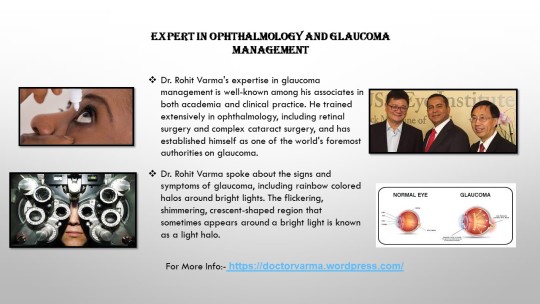
Types of Eye Defects
We 'see' beautiful and amazing things every day. Our eyes, the most developed sensory organ reveal the wonders of our environment before us. About 80% of the information is taken by the brain via the eyes. Thus, the health of eyes is important to all the happiness and well-being and it can't be overlooked.
Eye defects
Most of the people are subjected to eye defects at one time or another in their life. Some are minor which can be easily handled while some others require specialist consultation and care. If the symptoms of the eye defects are appearing really bad and don't clear up in a few days, check with an eye consultant and take the necessary treatment. Here are a few defects of the eye which is commonly affected. Examine any of these problems sounds familiar to you.
● Red Eyes
Red eyes can occur for several reasons. The eyes turn red or "bloodshot" as the blood vessels present in the eyes become enlarged or clogged with blood. It can happen in one or in both eyes. This common defect is a sign of minor infection or can be serious medical condition depending on the symptoms including irritation, watery eyes, itching, pain, sensitivity to light, etc. Red eyes are usually caused by allergies, injuries to the eye, over-wearing contact lenses, eye infections like conjunctivitis, etc. Some of the serious eye conditions that can cause red eyes are glaucoma, eye trauma, corneal ulcer, etc. Depending on the cause, there are so many treatment options for red eyes. For mild problems, home remedies and proper care can correct red eyes. If the symptoms are getting worse and don't clear up consult a doctor for a proper eye examination.
● Myopia
Myopia often referred as nearsightedness, is a condition where close objects are seen clearly but the distance objects can't be seen or appear blurred. It is a refractive error. It happens when the eyeball is too long than the normal or the refractive or the focusing power of the lens is strong. As a result, the image is focused in front of the retina. The defect is most common among the people under 40. Children whose parents have the problem of myopia have higher risks. Usually nearsightedness is stabilized by adulthood, but sometimes it can progress with age. Myopia can be treated by using glasses with concave lens or by refractive surgery.
● Hyperopia
Hyperopia is another refractive error where distant objects can be seen clearly but have difficulty to see the near objects. It is common in both adults and children and the symptoms include blurry vision, eye strain, and headache while looking objects at a close range or doing tasks like reading or using a computer. In this defect, the image is focused behind the retina instead of focusing directly on it. It can occur because the eyeball is shorter, or the refractive power of lens is weak. The defect can be treated with contact lenses or glasses. Depending on the intensity of the problem, the usage of glasses may vary. For instance, those who have severe vision problem have to wear glasses all the time while in mild cases, people need it only to see nearer objects or to do their tasks.

If you are looking for the best eye hospital in Los Angeles, California, United States, look no further than Dr. Rohit Varma. He has one of the leading eye clinics in Los Angeles, California, United States with most advanced facilities. All kind of eye defects and problems are diagnosed and treated here with a skilled team of ophthalmologists in Los Angeles, California, America. Being recognized as the top hospital with the best eye surgeon in Los Angeles, California, United States, Dr. Rohit Varma made a name for itself in Los Angeles, California, United States.
0 notes
Audio
Find out how increased cholesterol level can be serious cause having glaucoma, and stay tuned for latest update on Glaucoma and his measures.
0 notes
Text
When You Should Visit an Ophthalmologist?
Our muscles, organs, joints, and skin all deteriorate as we grow older. When we're young, the lenses in our eyes, known as natural crystalline lenses, are flexible and clear, allowing us to focus easily from close to far.
People of all ages may require the use of glasses to help them see closer or farther away, but this is most commonly due to the shape of the eye when we are young.
Around the age of 40, the natural crystalline lens begins to become cloudy and rigid, implying that the lens can no longer focus as well as it once could. Presbyopia is the medical term for this condition. Everyone's eyes age at different rates, but the older we get, the more the lenses cloud and become less flexible, and increasing the likelihood of needing assistance reading or seeing things up close, and cataracts begin to develop in a number of older people.
When should an ophthalmologist be consulted?
While the majority of the population wears glasses from a young age and visits an eye clinic or an ophthalmologist on a regular basis, there are signs you can look for as you get older that indicate you need to see a specialist for near vision or reading solutions.
Finding it difficult to read or complete other tasks because you have to move things further away to read or double-check details
While doing closer chores or reading, you start to get a headache.
Finding it difficult to read small print in dim lighting
While reading or doing close chores, you may develop tired eyes.
The signs listed above may indicate that you should have a comprehensive eye exam and talk about near vision or reading solutions.
1. Bifocal or trifocal glasses are designed for people who need glasses for distance, near, and intermediate vision. Some people prefer not to wear more than one pair of glasses, so bifocal glasses will correct distance and ear vision, while trifocal glasses will correct near, distance, and intermediate vision. Both of these options are completely unique to you and your eyes.
2. Prescription Reading Glasses- These are prescription reading glasses that have been customized by an optician or an eye specialist to fit your near/reading vision prescription. They will take into account any differences in astigmatism and eye strength, as well as how well they fit on your face.
3. Off-the-shelf reading glasses— these are reading glasses that can be found in most pharmacies and supermarkets, as well as other stores. They're usually less expensive, and they're likely to be the first quick fixes you buy when you first realize you need help with your near vision. While they may be a good starting point, especially if you are waiting for an appointment to have your macular degeneration issue treated, they are not the best option.
If you're thinking about surgery, make an appointment with a reputable ophthalmologist like Dr. Rohit Varma, who will go over the risks, benefits, and other options available to you.
Make a point of describing all of the issues you're experiencing. Don't be embarrassed or hesitant to discuss your issue. Explain in detail so that the Eye Specialist has a better understanding of the situation. Before prescribing any medication or recommending an operation, the doctor will ask you to undergo a series of tests. Have the tests performed at a reputable medical clinic. Follow the doctor's instructions and use the medications and eye drops he has prescribed. You can only expect to get better quickly if you follow all of the instructions.
We are one of the most well-known medical clinics for glaucoma testing and treatment. For your tests, you can reach out to us. Please contact us if you have any questions or concerns. We'll be happy to assist you.
If you're looking for an ophthalmologist, an eye specialist, or help with macular degeneration, Dr. Rohit Varma MD is your one-stop shop. For more information, please contact us right away.
0 notes
Text
Dr. Rohit Varma - Symptoms of Glaucoma

This week is World Glaucoma Week, an initiative created by Eye Health Education to help spread awareness about the disease. It’s a good opportunity for people who think they might be suffering from glaucoma to get their eyes checked out, and for those who already have the illness to get an update on their condition and learn about effective treatments. It’s also a good time to bust some common myths about the disorder.
Many people have never even heard of glaucoma, and fewer still know about its symptoms. In fact, it's estimated that less than 10 percent of glaucoma patients in the United States is conscious they must the illness. (Studies show that as many as 50 percent of patients first diagnosed with glaucoma are found to have almost gone certain vision.) Some of the earliest symptoms of glaucoma include blurred vision, eye pain, coronae everywhere lights, and headaches. These are also warning signs for other types of eye diseases, however, and vision loss caused by glaucoma may not show up until years after the disease begins.
Blurry Vision: Is blurry vision a symptom of glaucoma? If you're experiencing blurring or haziness of your vision, you may be wondering if this is a symptom of glaucoma. While there are several other causes of vision changes, such as cataracts or age-related macular degeneration, blurry vision in one or both eyes may be a sign of glaucoma. Glaucoma causes damage to the optic nerve, which sends visual information to the brain. Over time, this damage can lead to vision loss and blindness.
Eye and headache pain: If you are experiencing eye pain or a headache, there is a chance it may be a symptom of glaucoma. Glaucoma is a disease that damages your optic nerve, which is the nerve that connects your eye to your brain. This nerve helps you see. With glaucoma, a gradual loss of vision occurs. (If you are over 50 years old, you should have your eyes checked by an eye doctor every one to two years.)
Nausea and vomiting: Nausea and vomiting are symptoms of many different illnesses. In fact, these symptoms even accompany many medications. The nausea and vomiting caused by glaucoma medications may be one of the most common and least discussed topics among glaucoma care providers. Glaucoma medications are designed to lower pressure inside the eye, to help prevent damage to the optic nerve. Most medications do this by increasing the production of aqueous humor. (Aqueous humor is the fluid that fills the front part of the eye, between the cornea and the lens.
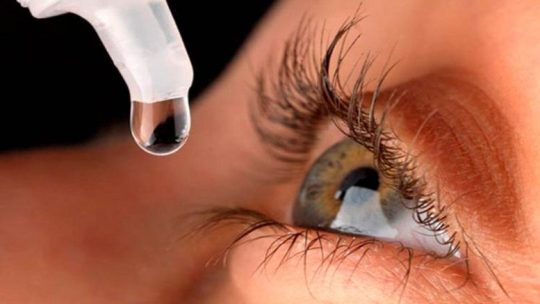
The appearance of rainbow colored halos around bright lights: During World Glaucoma Week, Dr. Rohit Varma discussed the symptoms of glaucoma, including the appearance of rainbow colored halos around bright lights. A light halo is the flashing, shimmering, crescent-shaped area that often appears around a bright light. Sometimes a visible halo actually forms a full circle around the light, which is really scary if you see it in your peripheral vision because it can mimic a migraine aura. The first time you see rainbow colored halos around bright lights, it is a shocking sight. It is not something that you would expect to see but it is actually a normal symptom of glaucoma. The halos are caused when the optic nerve is damaged. The optic nerve is the part of the eye that makes a connection between the back of the eye and the brain.
Sudden loss of vision: Sudden blindness, especially if it is accompanied by pain, may be caused by glaucoma. Glaucoma is a chronic disease that usually occurs without pain or without any symptoms. But if you experience sudden loss of vision, then you are suffering from glaucoma. It is important to note that all people with glaucoma don't lose their vision. So, if you suddenly lose your vision, it is important that you consult your ophthalmologist. It is not uncommon for people to lose vision temporarily, as this is something most of us have experienced at one point or another. But if you suddenly lose vision in one eye, or both, it can be a sign that you're suffering from the devastating effects of glaucoma. The American Academy of Ophthalmology recommends seeing an eye doctor for an examination if you have any signs of glaucoma or if you have a family history of the disease. Early detection is important, because glaucoma can lead to blindness if left untreated.
0 notes
Text
Dr. Rohit Varma Specializes in Ophthalmology
Dr. Varma has pioneered procedures and treatment described by the Los Angeles Times as "the closest thing to a cure for glaucoma that we have today." The only surgeon in the world who treats both chronic primary open angle glaucoma and macular degeneration with minimally invasive glaucoma surgery called Trabectome, he is also credited with producing highly-lauded results in cataract surgery and laser treatment of diabetes-related complications. A native of India, Dr. Varma earned an M.D. from Maulana Azad Medical College , University of New Delhi, and an MPH in global health at Johns Hopkins School of Public Health in Baltimore, Maryland . With over a decade of experience in Glaucoma care, Dr. Varma is the first physician in the Los Angeles region with extensive training and experience performing both manual iridotomy and small-incision trabeculectomy-the two standard surgeries used for minimally invasive glaucoma surgery. Rohit Varma, MD, FRCSC, has devoted his entire professional life to the study of diseases of the eye. A distinguished researcher, and an accomplished physician-scientist, Dr. Varma is recognized worldwide as a visionary leader in glaucoma and the epidemiology of eye diseases. Dr. Varma graduated from the University of Delhi in India and undertook his medical education at the Johns Hopkins School of Public Health in the US.
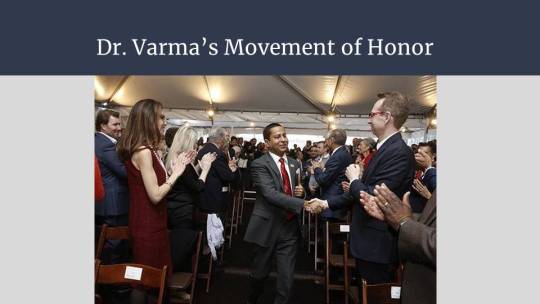
Dr. Rohit Varma is a board-certified retinal surgeon at the Doheny Eye Institute of University of Southern California's Keck School of Medicine. As a clinician trained in both ophthalmology and pediatrics, his research focuses on treating eye disease in children and aging populations, using the latest advances in medical technology to better understand treatable conditions such as macular degeneration. Rohit Varma, MD, PhD is a practicing clinician with expertise in treating glaucoma. His recent work also includes research and development of technologies designed to advance intraocular pressure monitoring towards the goal of a precise, non-invasive therapy.
Dr. Rohit Varma born in New Delhi, India, graduated from Maulana Azad Medical College (MAMC), New Delhi with impressive distinctions, and subsequently received his MD degree from All India Institute of Medical Sciences (AIIMS), New Delhi. He received the prestigious and competitive National Health Fellowship of the ministry of Health and Family Welfare, Government of India, which took him to the United Kingdom for 2 years for research training in ophthalmology under Sir John Wilson at the Glasgow Western Infirmary (renowned for its corneal transplantation). Rohit Varma, M.D., is an internationally recognized leader in the fight against blindness. Dr. Varma is a member of the Wilmer Eye Institute's leadership team and serves as a professor at the Johns Hopkins University School of Medicine and vice chairman for research in ophthalmology at The Johns Hopkins Hospital. On the recommendation of his colleagues, Dr. Varma has been appointed to an international panel that will establish standards for cornea treatment and transplantation. He is also a member of an American Academy of Ophthalmology committee that created guidelines for corneal transplants. The National Eye Institute has granted him three research awards for his work on corneal endotheliitis, corneal graft rejection and management of large astigmatism. Born and raised in India, Dr. Varma moved to Southern California for his undergraduate education and stayed to pursue his medical career, specializing in Ophthalmology. He is known for his relentless drive to better the lives of those with glaucoma. Dr. Varma is the first physician/scientist to correlate visual field loss with optic nerve damage in glaucoma patients and use this information to determine appropriate treatment protocols. His research findings have been published extensively in peer-reviewed journals and textbooks. Rohit Varma, M.D., Ph.D., is the co-founder of SCEI, which recently announced an exclusive licensing agreement with the stem cell companies that originated from his groundbreaking work at Keck School of Medicine of USC to grow retinal pigment epithelium cells in the laboratory for use in treating patients with age-related macular degeneration and Stargardt's disease—the first human treatments using stem cells from adult human donors. He is a pioneer in the field who has conducted research on implanting stem cells into the eye to treat blindness for more than a decade.
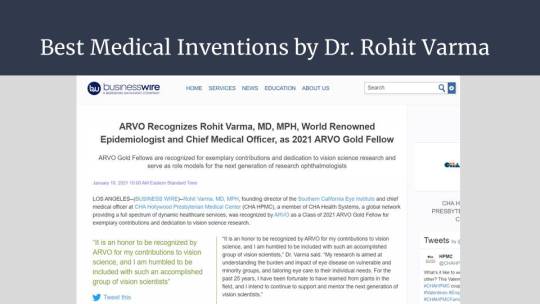
Rohit Varma, MD, PhD, FACS is an internationally renowned ophthalmologist, researcher and author. His expertise has earned him a reputation as a leading refractive surgeon, the founding chair of the Department of Ophthalmology at the Charles R. Drew University of Medicine and Science, the dean's regional advisor for special projects at the David Geffen School of Medicine at UCLA , as well as receiving distinguished alumni awards from both USC and Illinois Eye and Ear Infirmary. Having worked at Johns Hopkins for 20 years as a surgical resident, post-doctoral fellow, and an endowed chair of ocular research, Rohit Varma is known for his pioneering work with corneal stem cell therapeutic techniques. He authored the book, "Corneal Transplantation: A Comprehensive Analysis." Rohit Varma has completed two fellowships in glaucoma, one at the Wills Eye Institute in Philadelphia and the other at the Keck School of Medicine of USC. A native of India, he obtained his medical degrees from Delhi University. He is a Fellow and former Director of Glaucoma Services for UC Irvine.
0 notes
Video
vimeo
Rohit Varma, MD is an ophthalmologist and researcher, widely known for his inventions and researches which shocks the world with phenomenal information.
#Rohit Varma#Dr Rohit Varma#Rohit Varma MD#Rohit Varma USC#ophthalmologist#clinical scientist#Southern California Eye Institute#Hollywood Presbyterian Medical Center#Physician-Scientist#CHA Health Systems#glaucoma#cataracts#eye specialist#doctor
2 notes
·
View notes